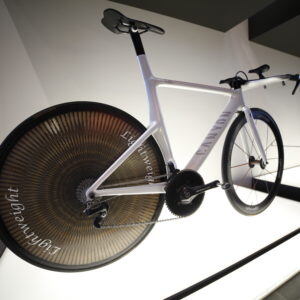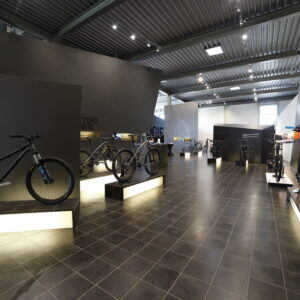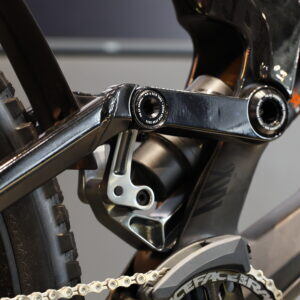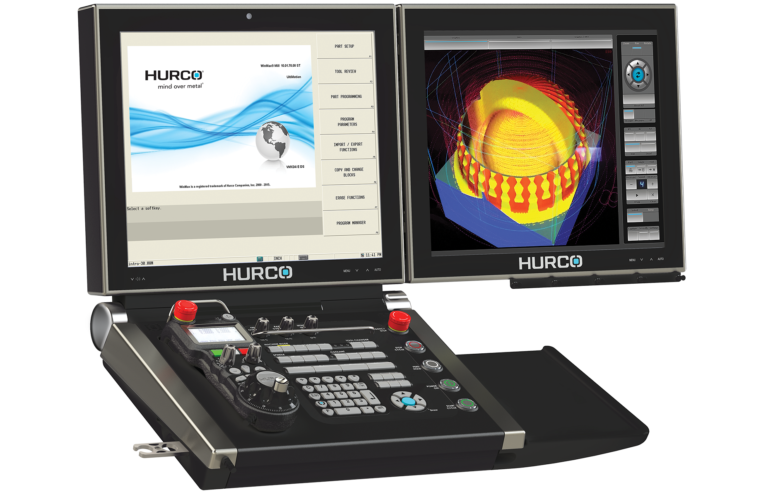10.08.2016 | Clients
Succeeding in the Development Sprint
Canyon Bicycles Produces High-End Bike Prototypes with a HURCO 5-Axis CNC Machine
The company’s story is as ambitious as its founder’s sporting passion: Roman Arnold, a passionate road cyclist and owner of a bike shop in Koblenz, founded Canyon Bicycles GmbH in 2001. Since then, Canyon has been creating high-end road and mountain bikes that set trends in design. Canyon bikes have won major races, and the brand has even been awarded the prestigious German Design Award. Today, Canyon employs over 750 people, operates across Europe, Asia, and Australia, and is preparing to enter the U.S. market.
In-House Prototype Manufacturing
All of Canyon’s bike components are designed and assembled in Koblenz, Germany. For in-house prototype production, the company relies on a HURCO 5-axis CNC machining center. In 2015, Canyon invested in its first in-house machining center and found the perfect solution with the HURCO VMX 42 HSRTi.
Before this, Canyon did produce prototypes, explains Gordon Koenen, Director of Quality Management – but with external partners, which required significant coordination.
“Delivery times were long, and there were often misunderstandings – especially in prototyping – which led to additional rounds of clarification,” he recalls.
Having their own machining center has greatly increased flexibility:
“With this machine, we can manufacture small and compact parts with high precision. But we can also clamp a full frame and use the generously sized table to perform complete machining.”
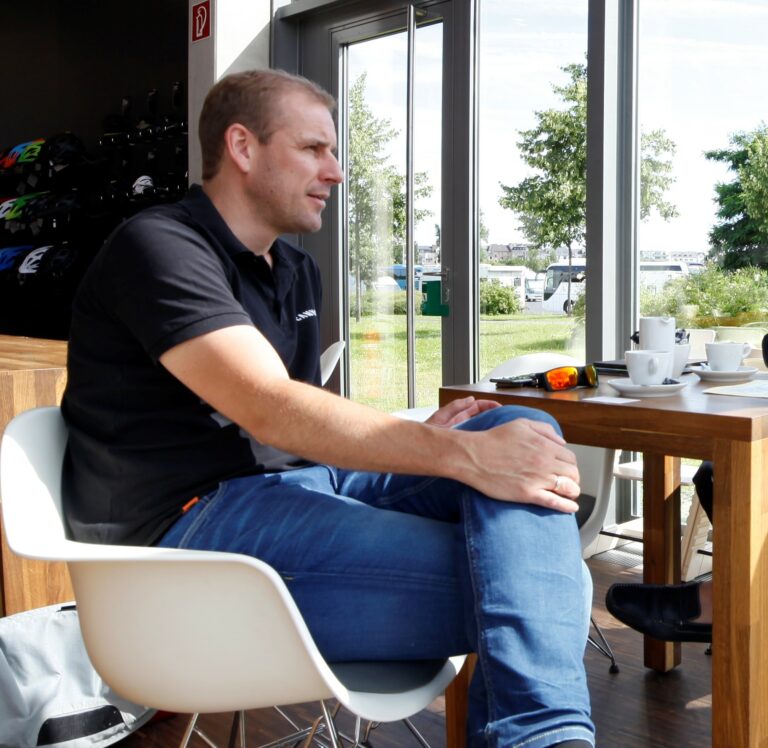
Winning the Race Against Time

In the competitive world of bicycle manufacturing, speed is everything. “We thrive on innovation,” Koenen says. “To maintain our level, the effort required keeps growing.” The bicycle industry moves quickly, he notes, often following a one-year development cycle. With only 6 to 9 months for product development, every minute counts.
Canyon embraces new technologies with open arms.
“We were the first in our industry to implement CT scanning for carbon fiber parts in the sports sector,” says Koenen. For early development stages, 3D printing is used to visualize components.
But for functional testing, real prototypes are essential:
“Suspension technology components are becoming increasingly complex. You can simulate everything digitally, but real-world performance can only be evaluated on the bike.”
Ultra-Fast Development Cycles
Canyon is extremely satisfied with the performance and precision of the HURCO machine. What’s more, in-house prototyping has boosted team motivation.
“The mindset of our staff has completely shifted. Now that they can bring their own ideas to life directly on the machine, they approach tasks with a whole new speed,” Koenen explains. Before, outsourcing often delayed or even discouraged innovation. Today, the HURCO machine is in constant use – and development times have dropped dramatically.
“If machine capacity allows, we can produce a part by the next day, exactly the way we imagined it.”
By contrast, outsourcing – often to a supplier in Asia – takes up to two weeks, which is far too slow for prototype development, especially with frequent design changes.
UltiMotion Software Feature: Up to 60% Faster
One of the key reasons Canyon chose HURCO was the intuitive and dialog-based operation of the 5-axis machine. One of their team members already had experience with the control system, which helped with onboarding.
Koenen explains:
“It’s a huge advantage that we don’t have to rely solely on CAD/CAM – we can program directly at the machine too.” One technician can create an NC program from a 3D model in the CAM system, while another programs in dialog mode on the machine. The two programs can then be linked using HURCO’s Dialog-NC program jump feature.
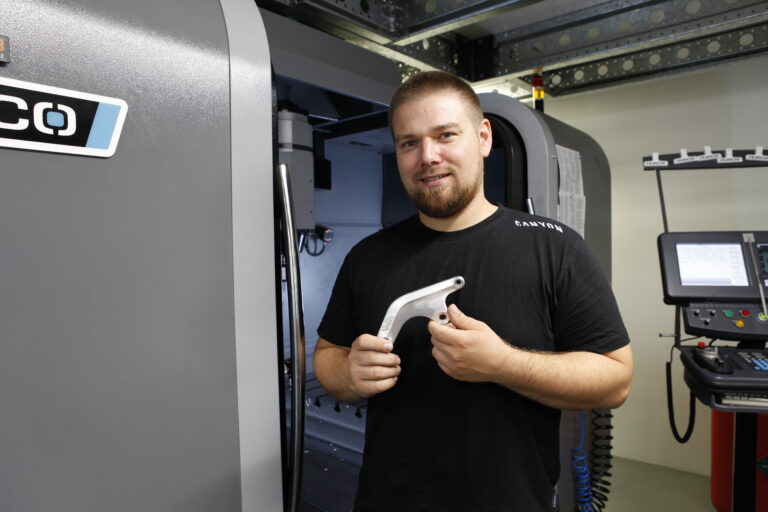
Björn Hartmann, a prototyping specialist who joined Canyon a year ago, is a fan of the HURCO control system:
“The 5-axis operation with dialog programming is incredibly easy to work with. The positioning is handled by the control – you barely have to think about it.”
Switching between dialog and CAM programming on the fly is a daily part of their workflow. Thanks to dynamic axis movements and a variable lookahead of up to 10,000 blocks, even complex 3D parts are efficiently processed.
“The time savings are huge,” Hartmann adds.
“At my previous company, we had two machines, but UltiMotion on the HURCO easily saves us up to 60% time, especially for trochoidal milling operations.”
A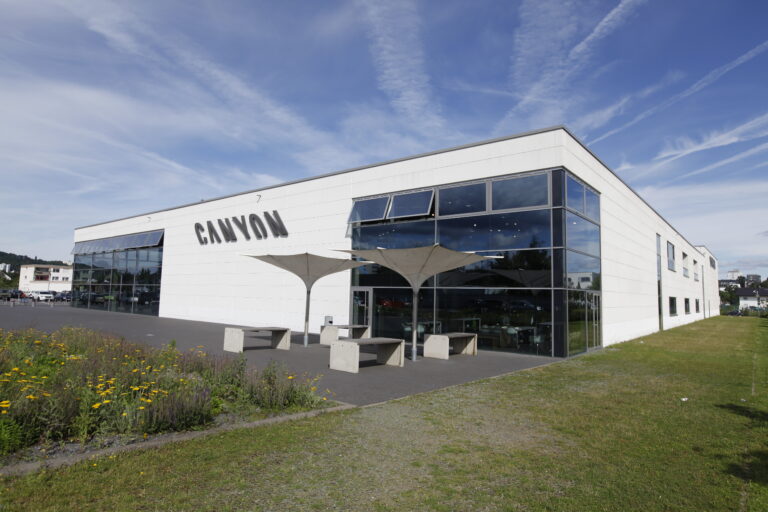 n Intuitive System for a Fast-Moving Industry
n Intuitive System for a Fast-Moving Industry
For Koenen, the HURCO control system fits perfectly with Canyon’s technology-forward culture:
“Our team quickly gets comfortable with the menu structure – it’s very intuitive. The industry needs to adapt to shorter training cycles. Extended training sessions will no longer be the norm because the tech is evolving so fast.”
That’s also part of Canyon’s personnel strategy. Currently, only two team members are assigned to operate the machine. But as the company grows and adds more HURCO machines, new operators must be able to get up to speed quickly.
According to Hartmann:
“HURCO’s control system is self-explanatory and super easy to learn.”
Koenen agrees. He sees strong alignment in values between the two companies:
“We didn’t just get the right machine at the right price with excellent service – we also found a partner that shares our mindset. From the beginning, we had the feeling that HURCO thinks like a mid-sized business. The chemistry was just right.”

